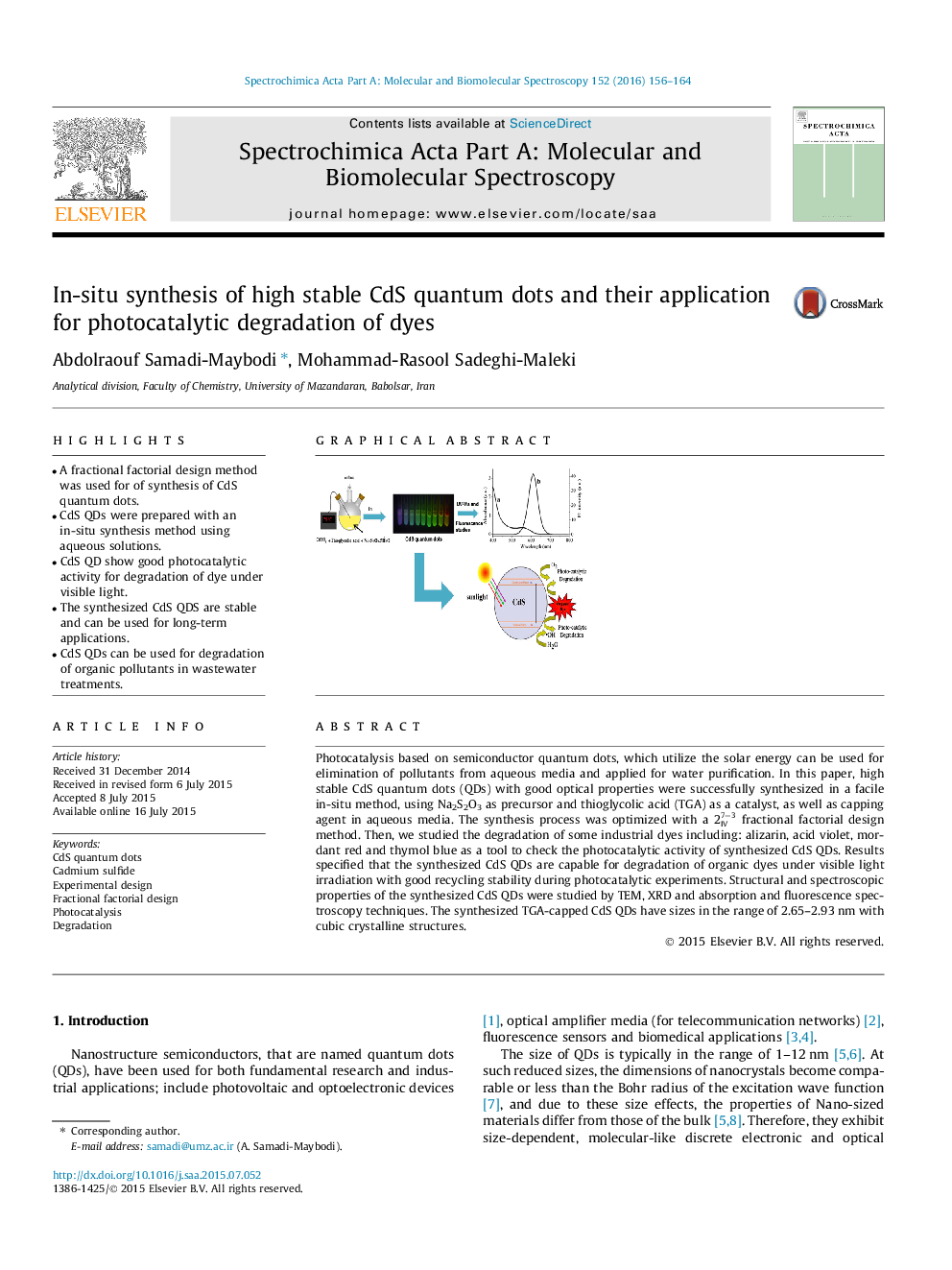| کد مقاله | کد نشریه | سال انتشار | مقاله انگلیسی | نسخه تمام متن |
|---|---|---|---|---|
| 1229759 | 1495217 | 2016 | 9 صفحه PDF | دانلود رایگان |

• A fractional factorial design method was used for of synthesis of CdS quantum dots.
• CdS QDs were prepared with an in-situ synthesis method using aqueous solutions.
• CdS QD show good photocatalytic activity for degradation of dye under visible light.
• The synthesized CdS QDS are stable and can be used for long-term applications.
• CdS QDs can be used for degradation of organic pollutants in wastewater treatments.
Photocatalysis based on semiconductor quantum dots, which utilize the solar energy can be used for elimination of pollutants from aqueous media and applied for water purification. In this paper, high stable CdS quantum dots (QDs) with good optical properties were successfully synthesized in a facile in-situ method, using Na2S2O3 as precursor and thioglycolic acid (TGA) as a catalyst, as well as capping agent in aqueous media. The synthesis process was optimized with a 2IV7–3 fractional factorial design method. Then, we studied the degradation of some industrial dyes including: alizarin, acid violet, mordant red and thymol blue as a tool to check the photocatalytic activity of synthesized CdS QDs. Results specified that the synthesized CdS QDs are capable for degradation of organic dyes under visible light irradiation with good recycling stability during photocatalytic experiments. Structural and spectroscopic properties of the synthesized CdS QDs were studied by TEM, XRD and absorption and fluorescence spectroscopy techniques. The synthesized TGA-capped CdS QDs have sizes in the range of 2.65–2.93 nm with cubic crystalline structures.
Figure optionsDownload as PowerPoint slide
Journal: Spectrochimica Acta Part A: Molecular and Biomolecular Spectroscopy - Volume 152, 5 January 2016, Pages 156–164